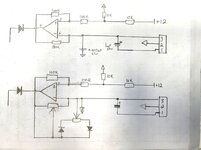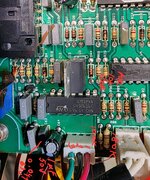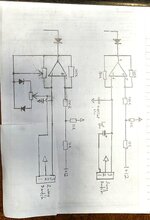MIAB
Newbie level 5

Is it possible to add two potentiometers to this circuit to be able to adjust frequency and duty cycle of this PWM circuit. At connector 13 (bottom) there is connected a 3 way (on-off-on) switch. When switched to 1+2 it is 2 cycles/s. When 2+3 it is no pulsing with 0 cycles/s. When switch in middle position (only 2) it is 200 cycles/s. This is in an Ac/Dc tig welder. I would like to be able to vary the pulses from 2-200 and better yet 0.1-200/second.
Thank you

Thank you
[MODERATOR ACTION]
- Rotate original image to portrait aspect
Last edited by a moderator:





